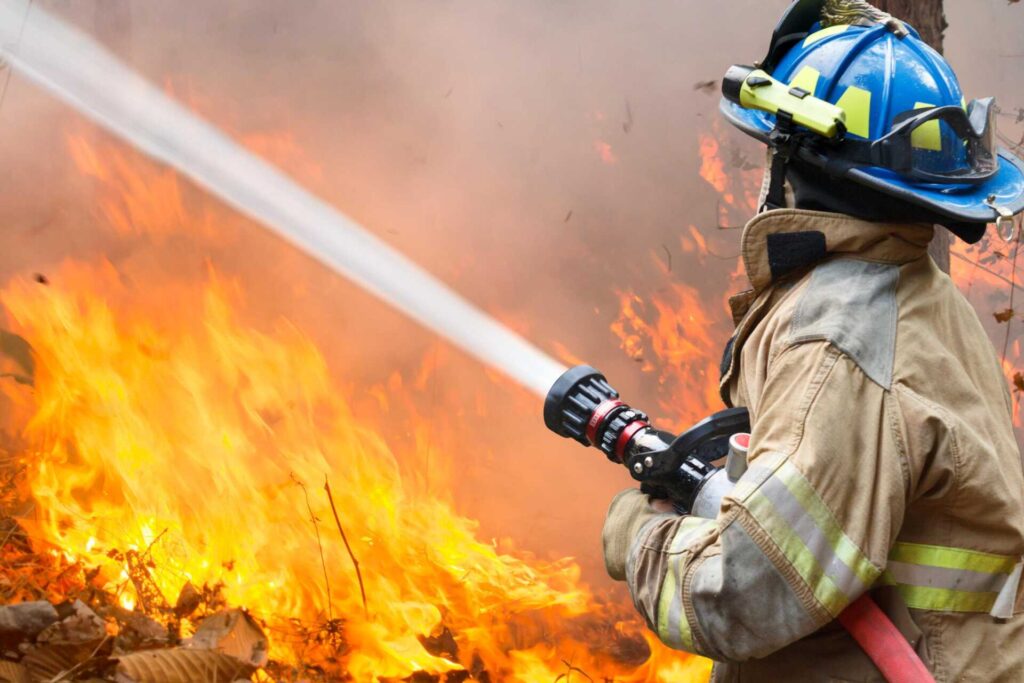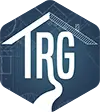
Contents
A fire can leave your home feeling like a shell of its former self, charred and hollow. Fire damage not only affects the structure but also your sense of safety and comfort. But before you rush in, there are vital steps to take that can make all the difference in your recovery. From ensuring your safety to documenting damages for insurance, each action counts. What you do next can set the stage for a smoother cleanup process and a safer home in the future. Let’s explore those essential tips.
Key Takeaways
- Assess structural integrity and safety before entering the area to begin cleanup efforts.
- Document all damage thoroughly with photos and notes for insurance claims.
- Remove debris and damaged materials promptly, prioritizing areas needing immediate attention.
- Use appropriate cleaning methods for soot and smoke, ensuring proper sanitation of affected areas.
- Ventilate the space and consider professional deodorization for persistent smoke odors.
Assess the Damage Immediately
Once the flames are extinguished, it’s essential to assess the damage immediately to prevent further issues. You might feel overwhelmed, but taking this vital step helps you regain control and connect with others who understand your situation.
Start with a thorough damage evaluation, looking for structural concerns, smoke damage, and water exposure. Document everything—photos and notes will be invaluable for insurance claims and recovery efforts.
Your immediate response matters, so don’t hesitate to reach out to local resources and support networks. They can offer guidance on what to do next, helping you feel less isolated.
Remember, you’re not alone in this. Sharing your experiences with others who’ve faced similar challenges can foster a sense of belonging.
As you assess the damage, take a moment to breathe. You’re on the path to recovery, and each step you take brings you closer to rebuilding your space.
Ensure Safety First
Before you start any cleanup, make sure the structure is safe to enter.
Wear protective gear like gloves and masks to shield yourself from harmful debris.
Also, steer clear of any hazardous materials you might encounter during the process.
Assess Structural Integrity
As you begin the cleanup process after a fire, evaluating the structural integrity of your home is essential for your safety.
Start with a thorough structural assessment to identify any damage that could pose risks. Look for signs like cracks in walls, sagging ceilings, or compromised beams.
It’s vital to involve professionals for an integrity evaluation if you notice any serious issues. They’ll help determine if your home is safe to enter and what repairs are necessary.
Remember, prioritizing safety means not rushing into the space without understanding its condition. Your home is your sanctuary, and ensuring its stability will help you feel secure as you navigate the recovery process.
Take your time—your well-being is what truly matters.
Wear Protective Gear
After ensuring the structural integrity of your home, the next step is to prioritize your safety by wearing protective gear.
You want to feel secure while tackling fire damage cleanup, and the right protective clothing is vital. Start with sturdy gloves to shield your hands from sharp debris and wear a mask to avoid inhaling harmful particles.
Safety goggles will protect your eyes from dust and soot. Long-sleeved shirts and pants are important, as they prevent skin contact with any remnants of smoke or chemicals.
Remember sturdy boots to keep your feet safe. By wearing this safety equipment, you’ll protect yourself and foster a sense of community, showing that you care about your well-being and that of those around you.
Avoid Hazardous Materials
While cleaning up fire damage, it’s crucial to recognize and avoid hazardous materials that can pose serious health risks.
By being aware and cautious, you can keep yourself and your loved ones safe. Here are four hazardous materials to watch out for:
Asbestos: Often found in older buildings, this toxic substance can cause severe respiratory issues.
Lead: Common in paint and pipes, lead exposure can lead to serious health problems, especially in children.
Mold: A byproduct of water damage, mold can trigger allergies and respiratory issues.
Chemicals: Household cleaners and other chemicals can become volatile after a fire, creating dangerous fumes.
Stay vigilant and prioritize safety to facilitate a smooth recovery process.
Contact Professional Cleanup Services
When you’re faced with the aftermath of a fire, it’s crucial to contact professional cleanup services right away. You’re not alone in this; many people have turned to experts who understand the emotional and physical toll of fire damage.
These professionals bring invaluable expertise to the cleanup process, ensuring that your home is restored safely and efficiently. They know how to handle hazardous materials and can assess the extent of the damage, which might be beyond what you can see.
With their help, you’ll navigate this difficult time more smoothly, allowing you to focus on healing and rebuilding. Relying on skilled cleanup services means you’re part of a community that prioritizes safety and support.
Document Everything for Insurance Claims
Once you’ve contacted professional cleanup services, it’s time to focus on documenting the damage for your insurance claims.
Properly documenting evidence can make a significant difference in managing insurance procedures, ensuring you receive the support you need.
Here are four essential steps to follow:
Take Photos: Capture clear images of all affected areas and items, including close-ups of damage.
List Damaged Items: Create a detailed inventory of personal belongings that were harmed or destroyed.
Record Conversations: Keep notes of discussions with insurance agents and restoration professionals for reference.
Gather Receipts: Collect any invoices or receipts related to the cleanup and repairs, as these will help substantiate your claim.
Remove Personal Belongings Safely
When removing personal belongings after a fire, you’ll want to assess any damage thoroughly to determine what’s salvageable.
Use proper packing techniques to protect your items during the cleanup process. This careful approach will help ensure your valuables remain safe as you work through the aftermath.
Assessing Damage Thoroughly
Before you plunge into the cleanup process, it’s essential to assess the damage thoroughly while ensuring your personal belongings are removed safely.
A careful damage evaluation will help you create a solid restoration plan and protect what’s important to you. Here are four key steps to follow:
Inspect each room: Identify areas affected by smoke, soot, and water.
Document everything: Take photos or videos of the damage for insurance claims.
Separate items: Keep belongings that are salvageable separate from those that are not.
Prioritize sentimental items: Focus on saving personal effects that hold special value.
Taking these steps will help you navigate the recovery journey with confidence and care for your valued possessions.
Proper Packing Techniques
How can you ensure your personal belongings are packed safely after a fire? Start by gathering quality packing materials, like bubble wrap and sturdy boxes. Use organization methods to keep items categorized, making recovery easier later. Here’s a simple guide to help:
| Item Type | Packing Materials | Organization Method |
|---|---|---|
| Clothing | Vacuum-sealed bags | Label by size |
| Fragile items | Bubble wrap, foam | Box by room |
| Documents | Plastic folders | Sort by importance |
| Electronics | Anti-static wrap | Group by function |
Carefully wrap each item, and don’t rush. This process ensures your cherished possessions remain intact, letting you focus on healing after the fire.
Clean and Sanitize Affected Areas
Although fire damage can feel overwhelming, cleaning and sanitizing the affected areas is essential for restoring your space and ensuring safety.
This process helps eliminate odors and prevents health risks associated with soot and smoke residue.
Here’s how you can effectively clean and sanitize:
Assess the Damage: Identify the areas impacted by fire, smoke, and water.
Use Appropriate Cleaning Techniques: Start with dry cleaning methods for soot, then use wet cleaning for surfaces.
Select Effective Sanitation Products: Choose products designed to neutralize odors and disinfect surfaces. Look for those specifically labeled for fire damage.
Ventilate the Area: Open windows and use fans to circulate air, helping to remove lingering odors.
Prevent Future Hazards and Damage
To prevent future hazards and damage, it’s essential to take proactive steps that enhance safety and reduce risks.
Start with fire prevention; install smoke detectors in key areas and check their batteries regularly. You’ll want to create and practice an escape plan with your loved ones, ensuring everyone knows what to do in case of an emergency.
Next, stay on top of maintenance tips for your home. Keep flammable materials away from heat sources, and regularly inspect your electrical systems for any signs of wear.
Don’t forget to clean out your gutters and maintain your chimney to prevent potential fire hazards.
Conclusion
In the aftermath of fire damage, it’s vital to act swiftly and safely. For instance, after a small kitchen fire, a homeowner documented the damage, contacted professionals, and successfully restored their space while preventing future fires with new smoke detectors. By following these seven essential tips, you can navigate the cleanup process effectively and protect your home. Remember, prioritizing safety and thorough documentation will make all the difference in your recovery journey.


